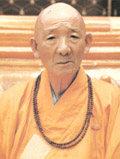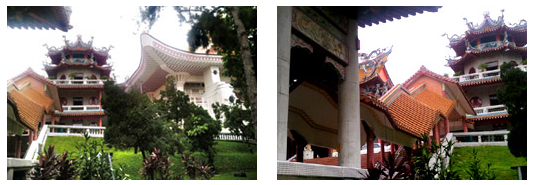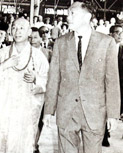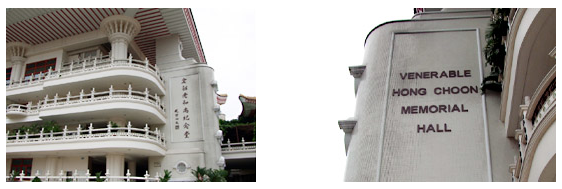
(1947 – 1990)
Hong Choon studied Feng Shui under Master Yen Ben in 1950s. He was imparted the secret Xuan Kong FengShui Theory of Tan’s School of San Yuan Feng Shui and became very competent in the art. This San Yuan Feng Shui comes under the famous Wu Chang Sect FengShui which originates in Wuxi, Jiangsu China.
In his stay in Singapore (as Abbot Phor Kark See Monastery), Master Hong Choon played a mentor and consultant role to many rich and influential individuals advising them in the aspect of Feng Shui well-being which includes his well known work at Grand Hyatt Hotel Orchard Road.
Late Master Hong Choon was born in Xiahu village JinJiang, Southern Province of Fujian.. He was the only son in the family of six and was the favorite child in the family.
During his early days, he was send to a private school to study Chinese Classical Literature. As a child then, he was very conscious about importance of social serving. At the age of sixteen, he became a monk and devoted himself to the teaching of Buddhism.
At the age of eighteen, he went to Nan Pu Tuo Temple in Xiamen with his master, Venerable Seck Hui Quan where he had the opportunity to meet Bhikkhu Taixu and studied under him. During World War II (Japanese Invasion of China), he fled with his master and made his first stop in Singapore where they stayed at Long Sun See Temple and Phor Kark See Temple. They then left for Medan, Indonesia and later settle down at Meow Sian Lin Temple in Penang.
Later on after the death of his master, the Singapore Buddhist Lodge, Putuo Temple and the Chinese Buddhist Association invited him to lead Phor Kark See Temple at Bright Hill Drive Singapore. Master Hong Choon then made Singapore his home and was acknowledged by the local Chinese Buddhists as their highest religious leader.
Master Hung Chuan participated in Master Yen Pen’s Feng Shui classes in the 1950’s. He learned Feng Shui and became very competent, in the process turned into a consultant to many rich and famous people in Singapore.
In the Nanyang Siang Pau – Sunday Edition of 12 April 1987, there was an article about one of the Feng Shui analysis done by Master Hung Chuan which concerned the Hyatt Hotel in Singapore.
He did this analysis in 1973 when the occupancy ratio at the Hyatt was around 40%. At the time of the implementation in 1973, Master Hung Chuan chose an auspicious date and time to make the existing fountain operational at 10am. On the very same day at 2pm, the Hyatt received a call that a 747 flight had been delayed and rooms were required for the 380 passengers. On the fourth day after the implementation, the hotel was fully booked. On redesigning and completion, the Hyatt experienced growth in occupancy to around 57% in the first year, 69% in the second year and 75% in the third year. He also made a prediction that after 10 years from his date of analysis the Hyatt would have a second entrance, which did happen in 1984. Astonishingly, in 1979, the Hyatt was experiencing 100% occupancy rates, requiring an extension which happened in 1984.
We were told that Master Hung Chuan informed the Singapore Hyatt that a renovation would be needed to be carried out by 1983/ 84 in order to accommodate the change in Feng Shui reigning Period from 6 to 7.


to the Phor Kark See temple in 1966


FengShui layout done by Late Grandmaster Hung Choon ( Famous Feng Shui Master in Singapore)
Many have claimed to understand the FengShui layout of Phor Kark See Monastery. Some has even gone on with beautiful explanations and details of its Feng Shui layout, giving special and fanciful names to match the formations.
But in actual, do they really understand the Feng Shui formula that are behind the work of our lineage? For instance, why are the doors at Phor Kark Monastery tilted to a certain angle? What purpose do they serve?
Some would explain that it is beneficial (giving special and fanciful formation names). Then, there are some who proclaimed that a tilted (off-center) door resembles a crooked mouth that triggers bad Feng Shui. But if that is indeed the case, why is Phor Kark Monastery (with a crooked mouth) still flourishing after so many decades and remain the largest Buddhist Temple in Singapore?
What is the reason behind? Could the landscape, watercourse and landforms that surround the monastery have influential luck effect?
